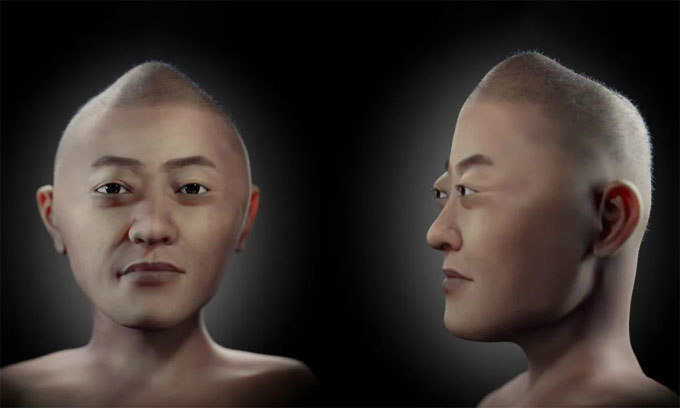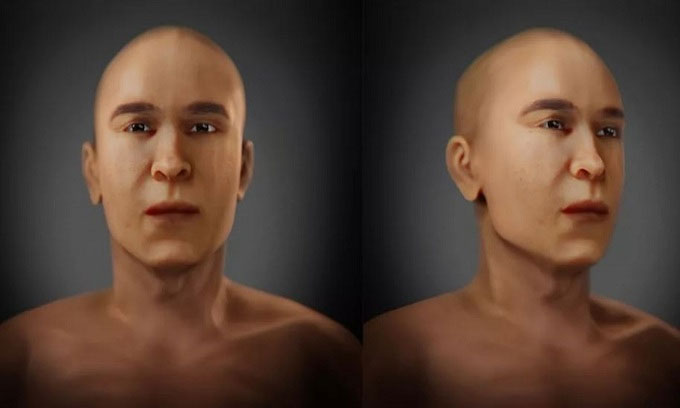Reconstructing the face of an Andean person with premature craniosynostosis posed difficulties for researchers because the skull shape was very different from normal.
Forensic expert and 3D designer Cícero Moraes and his colleagues reconstructed the face of an Andean person from Bolivia who lived in pre-Hispanic times (the period before Spanish explorers reached Central and South America ), IFL Science reported on December 5. This person has a rare birth defect called craniosynostosis . This malformation affects the formation and fusion of the skull bones, causing the skull to deform and often lead to cognitive impairment, vision, and other debilitating symptoms.
 Image of a reconstructed Andean face with a deformed skull. (Photo: Cícero Moraes).
Image of a reconstructed Andean face with a deformed skull. (Photo: Cícero Moraes).
The skull is being preserved at the National Archaeological Museum of Bolivia and cannot be accurately dated. However, it is more likely that the owner of the skull belonged to the Tiwanaku or Inca civilization . Tiwanaku formed in the 2nd century AD and disappeared about 1,000 years ago. Meanwhile, the Inca civilization is more famous, developing from around the 13th to the 16th century.
The morphology of the skull is significantly different from average, the research team said. Therefore, they consulted 6 facial deformity surgeons regarding premature craniosynostosis. This is a general term that includes many syndromes such as Crouzon syndrome, Apert syndrome and Pfeiffer syndrome.
Due to the lack of other bones in the body, the research team cannot know exactly which syndrome the owner of the skull has. They also could not determine this person’s gender based on the skull alone, although tooth development showed that this person died between the ages of 17 and 21. Therefore, they decided to create a neutral face, using Statistical studies rely on computed tomography scans to infer a subject’s true appearance.

Moraes has used this method to recreate the faces of ancient people and historical figures, but the new project poses many challenges due to the unusual morphology of the skull. For example, the structure of the skull causes the eyes to protrude significantly, and the shape of the intracranial region – where the brain is located – is also greatly different from normal models, leading to a more prominent face. Interestingly, the skull shows signs of having undergone some type of surgery and the patient appears to have continued to live for a short time.






